Ash (Fraxinus excelsior)
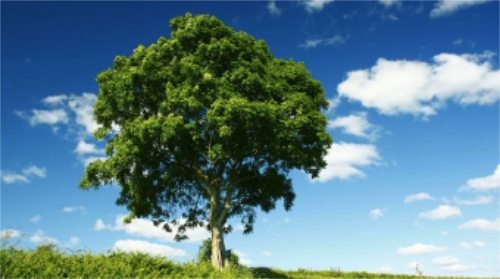
There are many Ash trees within the boundaries of the Llanymynech Limeworks and in order to determine the scale of the problem because of ash die-back we need to assess just how many ash trees we have. This is a huge undertaking and will be greatly assisted by volunteers.
If you ever visit Llanymynech Limeworks and would like to get involved as part of your visit, then please get in touch with us HERE
Identifying Ash
Leaves
Pinnately compound, typically comprising 3–6 opposite pairs of light green, oval leaflets with tips up to 40cm long. There is an additional singular ‘terminal’ leaflet at the end. The leaves can move in the direction of sunlight, and sometimes the whole crown of the tree may lean in the direction of the sun. Another characteristic of ash leaves is that they fall when they are still green.
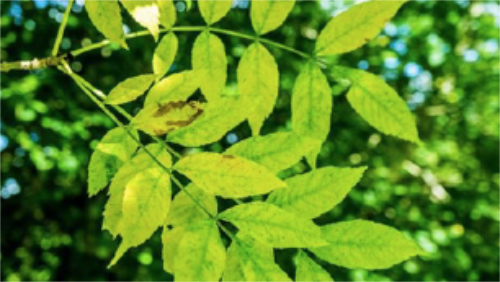
Flowers & Buds
Ash is dioecious, meaning that male and female flowers typically grow on different trees, although a single tree can also have male and female flowers on different branches. Both male and female flowers are purple and appear before the leaves in spring, growing in spiked clusters at the tips of twigs.
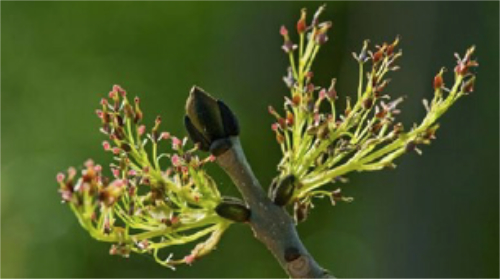
Seed pods
Once the female flowers have been pollinated by wind, they develop into conspicuous winged fruits, or ‘keys’, in late summer and autumn. They fall from the tree in winter and early spring, and are dispersed by birds and mammals.
NOTE: Ash keys / seed pods turn brown as they ripen, these can easily be mistaken for dead leaves associated with ash die back.
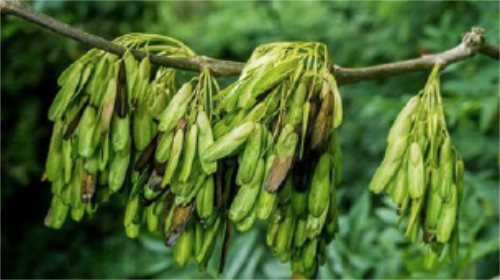
Chalara – Ash Dieback
What is it?
Chalara ash dieback is a serious and usually fatal tree disease caused by the fungus Hymenoscyphus fraxineus. It was first found in Buckinghamshire in 2012 and has since spread rapidly across the UK.
What species does it affect?
Chalara ash dieback targets ash trees, especially young ones. The common ash (Fraxinus excelsior) is very susceptible to infection.

What are the symptoms?
The disease causes leaf loss, lesions on the bark and dieback on the crown (top) of the tree. A younger ash tree will die more quickly than a mature one. An infected tree is also more vulnerable to other pests and diseases.
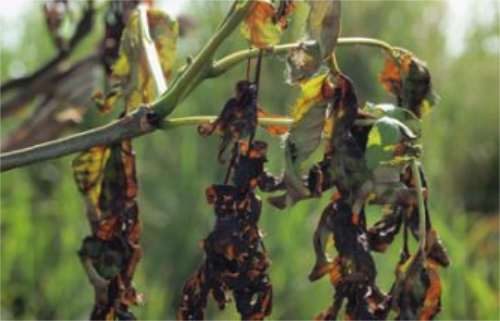
How does it spread?
It is believed that local spread of the disease is caused by wind. Moving diseased ash plants around and poor biosecurity is the most likely cause of spread over longer distances. When you are out and about in trees and woodland it is crucial that good biosecurity practices are followed to limit the spread of anything.
